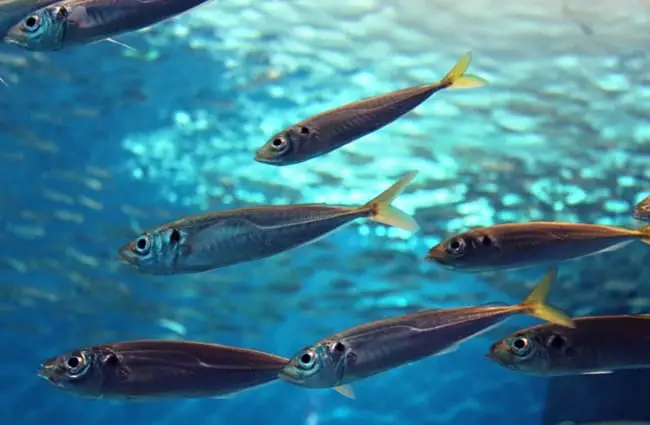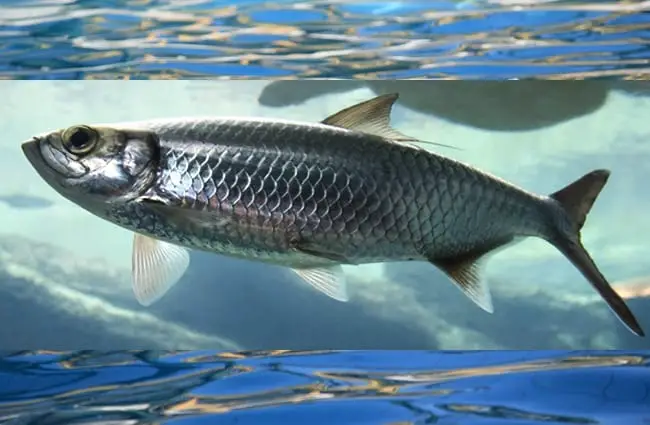The Silver Darlings: A Comprehensive Look at Herring
Herring. The very name evokes images of bustling fishing fleets, pickled delicacies, and the vast, shimmering schools that once dominated the North Atlantic. But beyond their culinary and economic significance, herring are fascinating creatures with a rich evolutionary history, complex behaviors, and a crucial role in marine ecosystems. This article delves into the world of herring, exploring their biology, life cycle, ecological importance, and relationship with humans.

What Exactly Is a Herring?
Herring belong to the family Clupeidae, a group of small, oily fish characterized by their streamlined bodies, silvery scales, and single dorsal fin. Several species are commonly referred to as herring, the most well-known being the Atlantic herring (Clupea harengus). Other species include Pacific herring (Clupea pallasii) and various types of blueback herring. These fish generally range from 9 to 18 inches in length and weigh between a few ounces to over a pound. They are pelagic fish, meaning they live in the open ocean rather than near the seabed.
A Journey Through Time: Herring Evolution and Habitat
The evolutionary history of herring stretches back to the Cretaceous period, over 100 million years ago. Fossil records suggest their ancestors were similar to modern-day sardines. Over millennia, they’ve adapted to thrive in the cold, nutrient-rich waters of the North Atlantic and Pacific Oceans. Today, Atlantic herring inhabit waters from Greenland to the Mediterranean Sea, while Pacific herring are found along the North American and Asian coasts. They prefer temperate waters and are often found in large schools near coastlines, estuaries, and fjords. These schooling behaviors provide protection from predators and facilitate spawning.

What’s on the Menu? Herring Diet and Feeding Habits
Herring are filter feeders, consuming vast quantities of zooplankton, including copepods, krill, and fish larvae. They use their gill rakers, comb-like structures in their mouths, to strain these tiny organisms from the water. This feeding strategy makes them a crucial link in the marine food web. They feed on zooplankton, which are primary consumers of phytoplankton, and in turn become prey for larger fish, seabirds, and marine mammals. Their diet can shift seasonally depending on the availability of prey.
Life Cycle: From Egg to Adult
Many herring species are anadromous, migrating between saltwater and freshwater for spawning. Spawning typically occurs in the fall and winter, with females depositing millions of eggs on gravel beds or submerged vegetation in coastal waters. These eggs are adhesive and stick to the substrate. The eggs hatch into larvae, which feed on phytoplankton and zooplankton. The larvae then develop into juveniles and gradually join larger schools. Herring reach sexual maturity between three and five years of age. They can live for over a decade, continuing to spawn multiple times throughout their lives.

Ecological Significance: Herring’s Role in the Ecosystem
Herring are a keystone species in many marine ecosystems. Their sheer abundance and high nutritional value make them a critical food source for a wide range of predators, including cod, haddock, salmon, seals, whales, and numerous seabirds. A decline in herring populations can have cascading effects throughout the food web, impacting the populations of these dependent species. They also play a role in nutrient cycling, transporting nutrients from deeper waters to the surface.
Human Interactions: From Fishery to Culture
For centuries, herring have been a vital food source for humans. Archaeological evidence suggests that herring were consumed by humans as early as the Stone Age. Historically, herring fisheries were particularly important in Northern Europe, and the fish was often preserved through salting, smoking, or pickling. These preservation techniques allowed for long-term storage and trade. Herring continues to be a popular food today, consumed grilled, smoked, pickled, or as a component in various dishes. Beyond food, herring have cultural significance in many coastal communities, often featuring in folklore and traditions. The “silver darlings,” as they are sometimes called, have shaped the economies and lifestyles of generations.

Finding Herring in the Wild: A Guide for Enthusiasts
Observing herring in their natural habitat can be a rewarding experience. Look for large schools of shimmering silver fish in coastal waters, estuaries, and fjords, particularly during the fall and winter spawning season. Binoculars can be helpful for spotting schools from a distance. Kayaking or boating provides closer views, but be mindful of disturbing the fish. Also, be aware of local fishing regulations and protected areas. During spawning season, herring often congregate in shallow waters, making them easier to observe.
Herring and Conservation: Addressing Challenges
While herring populations are currently stable in some areas, they have faced significant declines in others due to overfishing, habitat degradation, and climate change. Sustainable fishing practices, such as setting catch limits based on scientific assessments and protecting spawning grounds, are crucial for ensuring the long-term health of herring populations. Monitoring ocean temperatures and addressing pollution are also vital for mitigating the impacts of climate change and preserving herring habitat.
For the Zookeeper: Caring for Herring in Captivity
Maintaining herring in a captive environment requires careful attention to water quality, diet, and social dynamics. Large tanks with robust filtration systems are essential to keep water conditions pristine. A diet consisting of high-quality zooplankton and small crustaceans should be provided. Herring are schooling fish, so maintaining a sufficient number of individuals is crucial to minimize stress and promote natural behaviors. Avoid overcrowding and provide ample space for swimming. Regular health checks and monitoring for signs of disease are also important.

Fascinating Herring Facts
- Schooling Masters: Herring schools can contain thousands, even millions, of individuals, creating a dazzling spectacle.
- Sound Communication: Herring use sounds, created by contracting muscles, to communicate with each other, especially during spawning.
- Swim Bladder Acoustics: Their swim bladder acts as a resonating chamber, amplifying these sounds.
- Oily Composition: Herring are rich in omega-3 fatty acids, making them a healthy food choice for humans and other animals.
- Migration Patterns: Some herring populations undertake long-distance migrations, traveling hundreds or even thousands of kilometers.
- Spawning Rituals: Spawning herring often create a milky cloud in the water as they release eggs and sperm.
- Historical Significance: The Dutch herring fishery played a major role in the country’s Golden Age.
The herring, a seemingly simple fish, holds a complex and vital role in our world. From their evolutionary origins to their ecological impact and cultural significance, these silver darlings continue to captivate and sustain life in our oceans and beyond. Understanding and protecting herring is not just about preserving a species; it’s about safeguarding the health of our marine ecosystems and ensuring a sustainable future for all.

![Red Angus Closeup of a beautiful Red Angus cowPhoto by: U.S. Department of Agriculture [pubic domain]https://creativecommons.org/licenses/by/2.0/](https://animals.net/wp-content/uploads/2020/03/Red-Angus-4-238x178.jpg)




![Red Angus Closeup of a beautiful Red Angus cowPhoto by: U.S. Department of Agriculture [pubic domain]https://creativecommons.org/licenses/by/2.0/](https://animals.net/wp-content/uploads/2020/03/Red-Angus-4-100x75.jpg)

